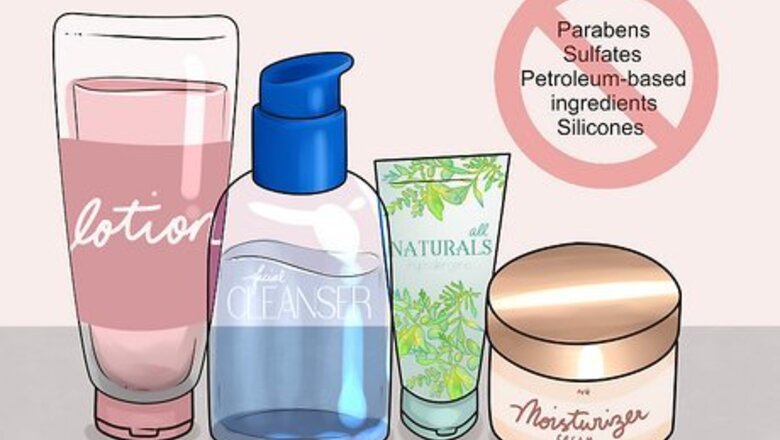
views
Choosing the Right Makeup
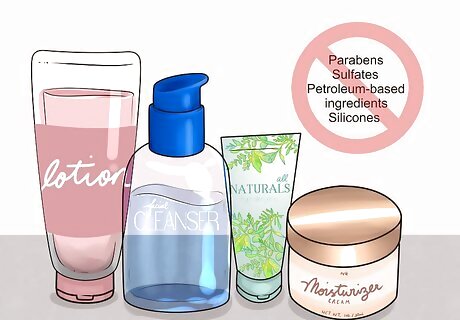
Use makeup that doesn't contain allergens. Check the ingredients list on the back of makeup before you buy it. Avoid products that have common allergens like parabens, sulfates, petroleum-based ingredients, or silicones. If you’re allergic to gluten, make sure you aren’t buying makeup that contains wheat which is a surprisingly common ingredient. There are no FDA or government standards for what constitutes “hypoallergenic.” Companies can use the label whenever they’d like, so always read the ingredients before you assume a product is okay for you.
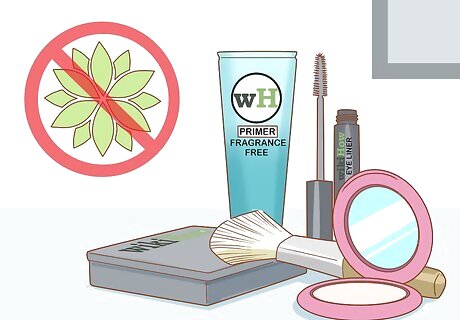
Look for fragrance-free makeup that won’t irritate your eyes. Fragrance is one of the worst offenders when it comes to irritation. You may not think your foundation or highlighter has a smell, but fragrance is often included to cover up the scents of ingredients. Stay away from fragrances in any products that go on your face near your eyes including moisturizers and eye creams. EXPERT TIP Daniel Vann Daniel Vann Licensed Aesthetician Daniel Vann is the Creative Director for Daredevil Cosmetics, a makeup studio in the Seattle Area. He has been working in the cosmetics industry for over 15 years and is currently a licensed aesthetician and makeup educator. Daniel Vann Daniel Vann Licensed Aesthetician Choose products with a short ingredient list. According to makeup artist Daniel Vann: "In general, the shorter the list of chemicals in your makeup, the less irritating it will be. Also, avoid products that contain fragrances, which is a bigger problem for a lot of people than they realize."
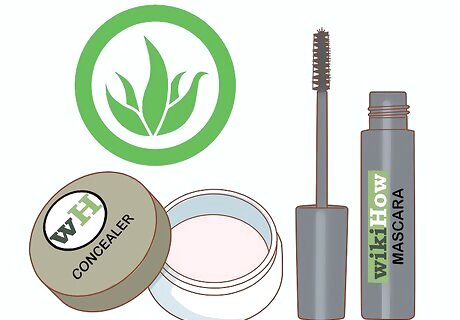
Buy eye products with hydrating properties like aloe vera or vitamin B5. Moisturizing ingredients that have been added to makeup like concealer, mascara, or cream eye shadow can help prevent your eyes from getting red and dry throughout the day. Other good-for-you additives include organic oils, butters, and cucumber extract.
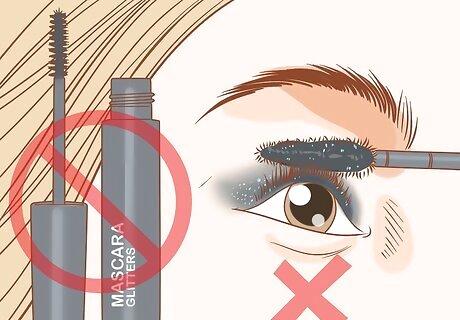
Avoid makeup with glitter or sparkles. This includes anything from eye shadows to bronzers to mascara. The tiny pieces of glitter can easily fall into your eyes, causing discomfort.
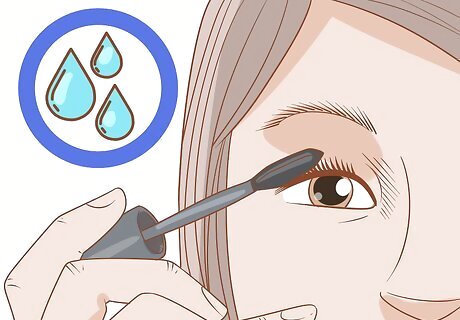
Pick a tubing formula mascara that goes onto your lashes while wet. Tubing formulas cover your lashes in tiny wet tubes that, as they dry, bind to your lashes. They're often water-based. Other formulas that you just paint on are made from waxes and tend to flake off and dry out your eyes.
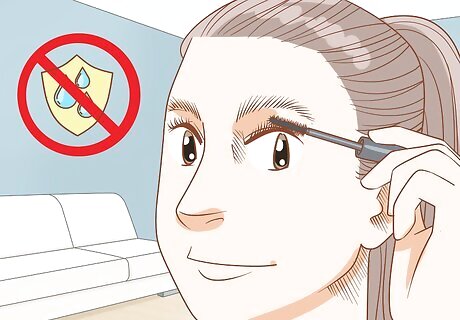
Stick to basic black mascaras that don’t have added properties or dyes. Lengthening, thickening, or waterproof mascaras sound great but they also come with extra chemicals that bother your eyes. Colored mascaras are also a no-no as dye (especially red dye) can cause watering eyes. Thickening mascara contains hydroxyethyl cellulose (HEC) which is used to make bubbles in soap. Waterproof mascara is tougher to remove so you’ll be rubbing - and irritating - your eyes more.
Preparing to Put on Your Makeup
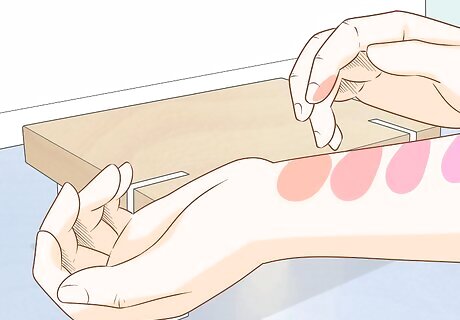
Test makeup on a patch of skin on your arm before using it. Even products that claim to be allergy-free can cause a reaction on your skin. Use a cotton swab to dab some of the makeup onto your forearm and cover the area with an adhesive bandage. Check it at the end of the day. If there’s no redness or itching, it should be safe to use.
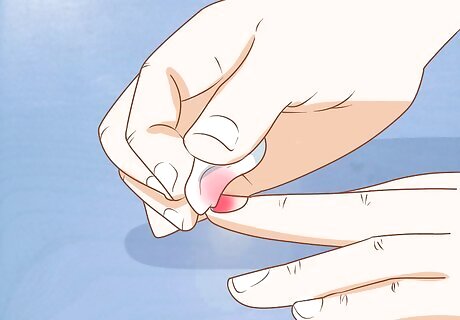
Remove nail polish from your hands that could be hurting your eyes. You wouldn’t think your manicure would be to blame for watery eyes. But a lot of nail polishes contain formaldehyde and the chemical’s fumes can hurt your eyes. Keep your nails bare of polish for a while to see if it helps.
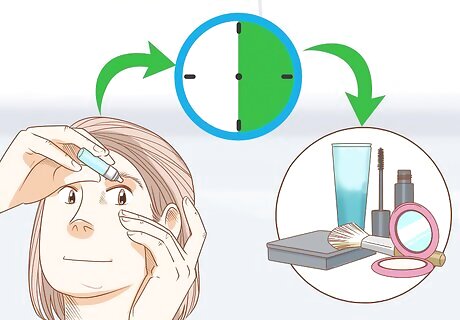
Use eye drops at least 30 minutes before you do your makeup. Wash your hands, tilt your head slightly back, and squeeze a drop into the inner corner of each eye. Close your eyes and keep them closed for 1 to 2 minutes, giving the drops enough time to soak into your eyes as well as flush out any irritants. Don’t reach for the redness relief drops as they can be addictive. These work by constricting the red enlarged blood vessels in your eyes. But when they wear off, the vessels often end up bigger than before so you reach for another drop.
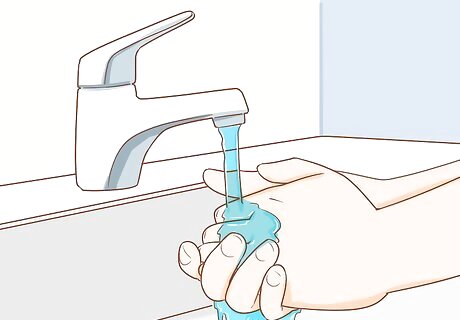
Wash your hands prior to putting on makeup. Think about everything you touch during the day and how much dirt, grime, and germs are on your hands as a result. You don’t want that in your eyes! Wash your hands thoroughly with gentle soap and warm water before using makeup or touching your face. This is especially important if you use your fingers to apply shadow or cream.
Applying Makeup Properly
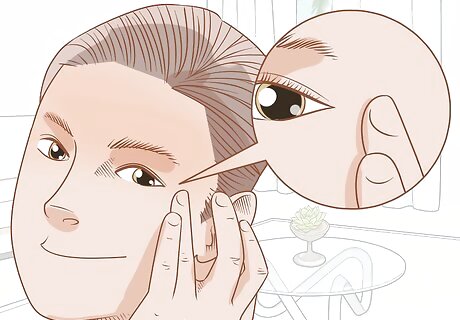
Keep eye cream about ⁄2 inch (1.3 cm) away from your eyes. If you apply your eye cream or even moisturizer too close to your eyes, it can actually get into your eyes when it absorbs into your skin. How irritating! Leave the space directly around your eye free of creams to prevent that from occurring.
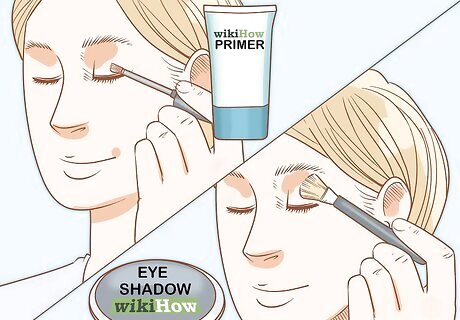
Swipe primer onto your eyelids before using powder eye shadow. Powder has a tendency to crumble into your eyes, which is never good for people with sensitive eyes. Dab a hypoallergenic primer across your lids before brushing powder on to help hold the powder in place. Using a cream eye shadow in place of powder is also an option to avoid getting irritants in your eyes.
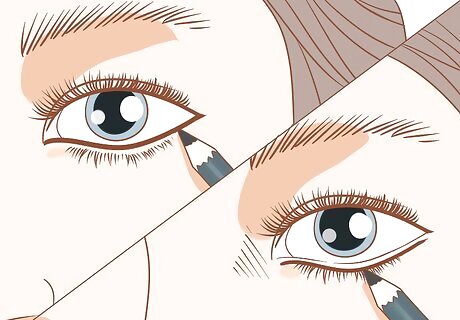
Put eyeliner on your lash line only, not your waterline. Your waterline is the flat edge inside your lash line. Because your eyeliner could have bacteria on it, using it so close to your eye puts you at risk for an eye infection. Sharpening your eyeliner a bit before each use can also help remove a top layer of potential germs.
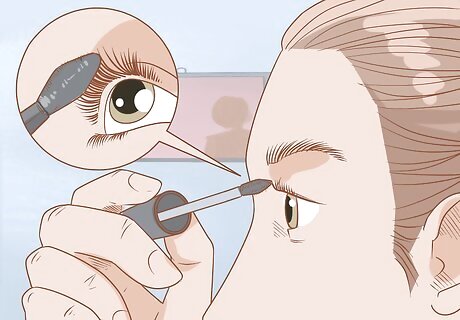
Apply mascara to just the top half of your upper lashes. Avoid using mascara at the root of the lashes to prevent irritating the eyelid skin, which is some of the most sensitive skin on your body. Holding the brush horizontally, start at the middle of your upper lashes and pull the brush upward, coating the lashes with mascara. Your lower waterline is home to the Meibomian glands which produce oil to keep your eyes moist. If you put eyeliner on your waterline, you can clog the glands and dry out your eyes as a result. Skipping your lower lashes can be a good idea, too, for preventative measures. If you tend to have watery eyes, mascara on your lower lashes will run or smear easily.
Preventing Eye Irritation
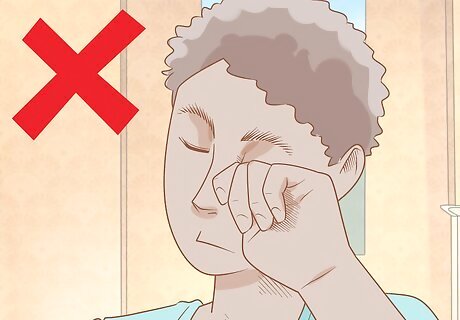
Keep your hands away from your eyes during the day. It’s tempting to rub your eyes when they’re watering or itchy. But the more you rub, the worse they get. Plus, any germs on your hands from daily activities are transferred to your eyes when you rub them. If you absolutely have to rub your eyes, make sure to wash your hands thoroughly first. Rubbing your eyes frequently can even damage your cornea and cause more serious health issues.
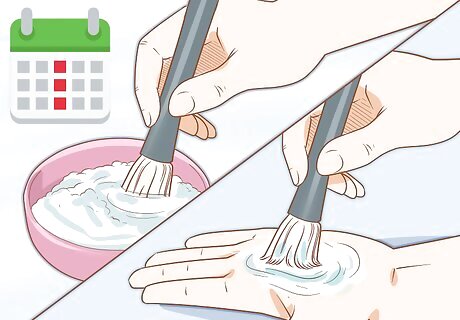
Clean your makeup brushes once a week with soap and water. Not only do your brushes soak up your makeup, they also soak up oil and bacteria. Squeeze a couple pumps of soap into a bowl and fill with lukewarm water. Gently swirl the brushes in the water, using your hands if necessary to massage out any caked-on product. Then rinse with water and dry thoroughly with a paper towel. You can use shampoo or dishwashing soap instead of hand soap, as well. If you use a brush cleanser, you don’t need to add water. Just put a dollop of cleanser in the palm of your hand and use it to massage the brush bristles. Then rinse the brush and let it dry. Always put covers on your brushes after cleaning them to protect them from airborne germs.
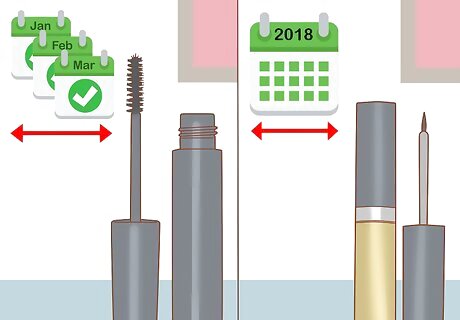
Replace mascara every 2 to 3 months and liner and shadow every year. Even makeup has an expiration date, since the products are exposed to germs on your face every day. You’ll know it’s time to toss something out sooner than its recommended shelf life if it dries up or starts to smell. Every time you pump your mascara wand, it brings air into the tube… along with any bacteria lurking in the air. The FDA has even reported cases of women becoming permanently blind due to using old makeup.
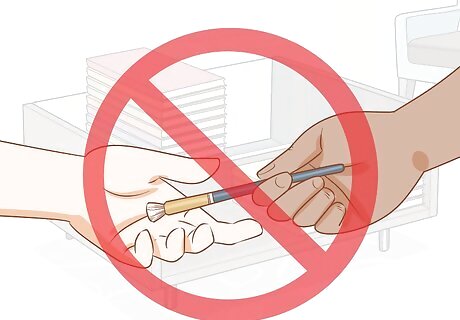
Avoid sharing makeup with your friends so you don’t get pink eye. Letting your best friend use your eyeliner comes with a high risk of getting conjunctivitis, or pink eye. Even if they don't appear to be infected, their makeup could be carrying the germs. Symptoms of pink eye include sticky discharge in the corner of your eye, crusted eyelids, and itching. If you experience any of these, go see your doctor. They can prescribe antibiotic drops to get rid of the infection.
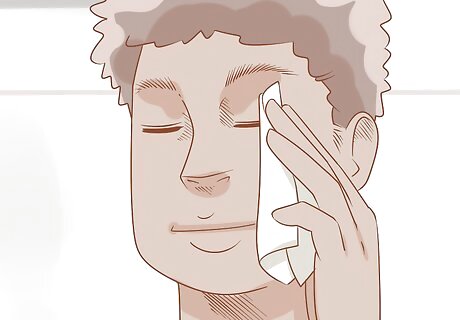
Remove your eye makeup every night with eye-specific wipes. You might be guilty of occasionally falling asleep with a full face of makeup, but don’t make it a habit. Leaving makeup on can clog eyelash follicles and lead to blepharitis, which is an inflammation of the eyelid at the base of your lashes. Use makeup remover wipes specifically for eyes to gently swipe off mascara, shadow, and liner, then rinse with water. Eye-specific makeup remover is gentler than normal facial cleansers or makeup removers. Look for eye makeup remover that has hydrating additives like panthenol or aloe vera. Micellar water is a great option for sensitive eyes. It doesn’t include any alcohol and the micelle molecules latch onto dirt and makeup easily, so you don’t have to use a lot of pressure or scrubbing. Talk about easy on the eyes! Don’t rub vigorously when taking off your eye makeup. Harsh scrubbing irritates and dries out your eyes.



















Comments
0 comment